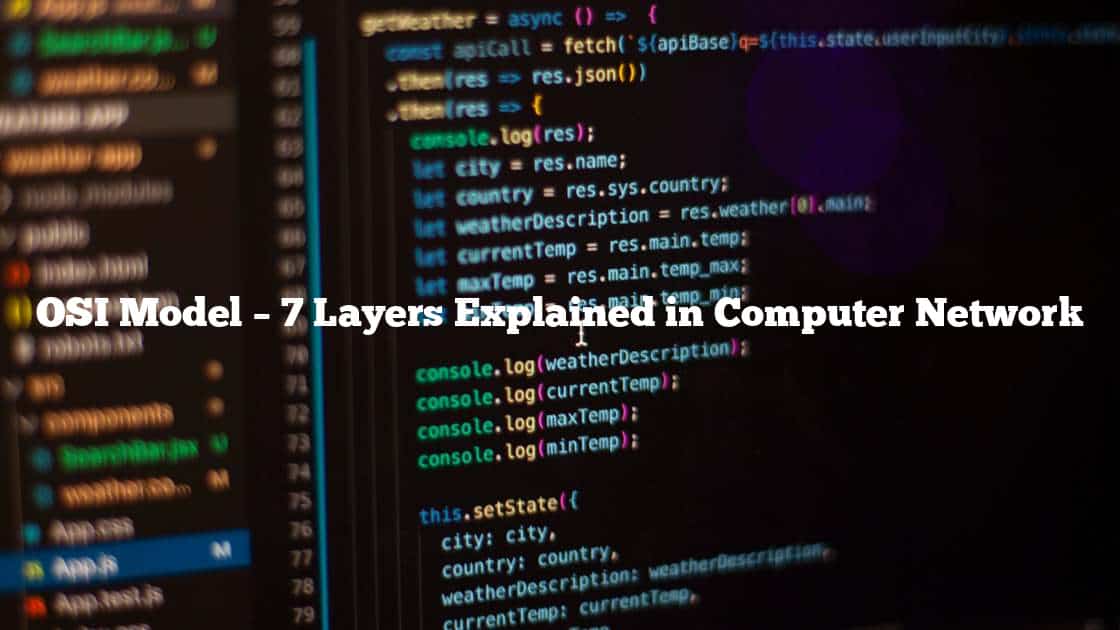The OSI (Open Systems Interconnection) model is a framework that describes how different networking protocols and technologies work together to enable communication between devices on a network. It is a reference model that provides a common understanding of how different networking protocols and technologies fit together, and it helps network designers and administrators understand how different protocols and technologies work together to achieve specific networking goals.
Table of Contents
Here are the seven layers of the OSI model, each with a brief definition:
PHYSICAL LAYER:
The Physical Layer is the first layer of the OSI model, and it is responsible for transmitting data over a physical medium, such as a copper or fiber optic cable. It defines the electrical, mechanical, and procedural characteristics of the physical connection between devices, including the type of cables and connectors used, the signal voltages and timings, and the methods used to transmit and receive data.
DATA LINK LAYER:
The Data Link Layer is the second layer of the OSI model, and it is responsible for providing reliable communication between devices on a single link or segment of a network. It provides error detection and correction, as well as flow control and access control to the physical medium. The Data Link Layer is responsible for creating a reliable link between devices by ensuring that data is transmitted accurately and efficiently. It does this by using techniques such as error detection and correction, flow control, and access control.
NETWORK LAYER:
The Network Layer is the third layer of the OSI model, and it is responsible for routing packets between devices on different segments of a network. It provides logical addressing and routing services, allowing devices to communicate with each other regardless of their physical location. The Network Layer is responsible for routing packets between devices on different segments of a network, and it does this by using logical addresses and routing protocols.
TRANSPORT LAYER:
The Transport Layer is the fourth layer of the OSI model, and it is responsible for providing reliable end-to-end communication between devices. It ensures that data is delivered to its intended destination without errors, and it provides flow control and error recovery services. The Transport Layer is responsible for providing reliable end-to-end communication between devices, and it does this by using techniques such as flow control, error recovery, and congestion control
SESSION LAYER:
The Session Layer is the fifth layer of the OSI model, and it is responsible for establishing, maintaining, and terminating communication sessions between devices. It provides services such as session establishment, maintenance, and termination, as well as synchronization and checkpointing. The Session Layer is responsible for establishing, maintaining, and terminating communication sessions between devices, and it does this by using techniques such as session establishment, maintenance, and termination, as well as synchronization and checkpointing.
PRESENTATION LAYER:
The Presentation Layer is the sixth layer of the OSI model, and it is responsible for formatting and translating data so that it can be understood by different devices and applications. It provides services such as data compression, encryption, and decryption. The Presentation Layer is responsible for formatting and translating data so that it can be understood by different devices and applications, and it does this by using techniques such as data compression, encryption, and decryption.
APPLICATION LAYER:
The Application Layer is the top layer of the OSI model, and it is responsible for providing services to applications and users. It provides services such as file transfer, access to databases, and email. The Application Layer is responsible for providing services to applications and users, and it does this by using techniques such as file transfer, access to databases, and email.

